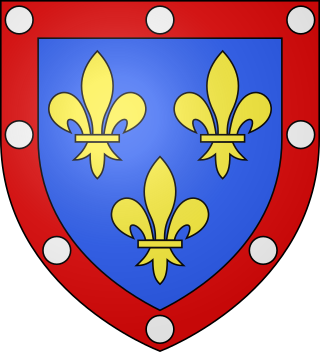
Peter II of Alençon, called The Noble, was Count of Alençon from 1361 and Count of Perche from 1377. He was the son of Charles II of Alençon and Maria de la Cerda.
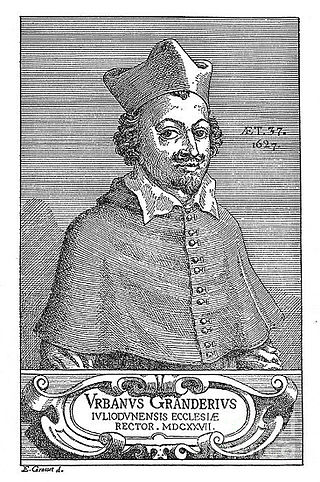
The Loudun possessions, also known as the Loudun possessed affair, was a notorious witchcraft trial that took place in Loudun, Kingdom of France, in 1634. A convent of Ursuline nuns said they had been visited and possessed by demons. Following an investigation by the Catholic Church, a local priest named Urbain Grandier was accused of summoning the evil spirits. He was eventually convicted of the crimes of sorcery and burned at the stake.
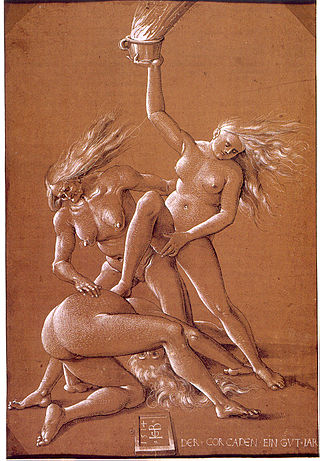
European witchcraft is a multifaceted historical and cultural phenomenon that unfolded over centuries, leaving a mark on the continent's social, religious, and legal landscapes. The roots of European witchcraft trace back to classical antiquity when concepts of magic and religion were closely related, and society closely integrated magic and supernatural beliefs. Ancient Rome, then a pagan society, had laws against harmful magic. In the Middle Ages, accusations of heresy and devil worship grew more prevalent. By the early modern period, major witch hunts began to take place, partly fueled by religious tensions, societal anxieties, and economic upheaval. Witches were often viewed as dangerous sorceresses or sorcerers in a pact with the Devil, capable of causing harm through black magic. A feminist interpretation of the witch trials is that misogynist views of women led to the association of women and malevolent witchcraft.

Gilles de Rais, Baron de Rais, was a knight and lord from Brittany, Anjou and Poitou, a leader in the French army, and a companion-in-arms of Joan of Arc. He is best known for his reputation and later conviction as a confessed serial killer of children.

Marie de Berry was suo jure Duchess of Auvergne and Countess of Montpensier in 1416–1434. She was the daughter of John, Duke of Berry, and Joanna of Armagnac. She was married three times. She acted as administrator of the Duchy of Bourbon for her third spouse John I, Duke of Bourbon, during his imprisonment in England after he was captured following the French defeat at the Battle of Agincourt in 1415, until 1434.
Alain Demurger is a French historian, and a leading specialist of the history of the Knights Templar and the Crusades.
Régine Pernoud was a French historian and archivist. Pernoud was one of the most prolific medievalists in 20th century France; more than any other single scholar of her time, her work advanced and expanded the study of Joan of Arc.
In the early modern period, from about 1400 to 1775, about 100,000 people were prosecuted for witchcraft in Europe and British America. Between 40,000 and 60,000 were executed. The witch-hunts were particularly severe in parts of the Holy Roman Empire. Prosecutions for witchcraft reached a high point from 1560 to 1630, during the Counter-Reformation and the European wars of religion. Among the lower classes, accusations of witchcraft were usually made by neighbors, and women made formal accusations as much as men did. Magical healers or 'cunning folk' were sometimes prosecuted for witchcraft, but seem to have made up a minority of the accused. Roughly 80% of those convicted were women, most of them over the age of 40. In some regions, convicted witches were burnt at the stake.
Peronne Goguillon was an alleged French witch. She and the other women who were accused with her are regarded the last women to have been burned at the stake for witchcraft in France.
This is a bibliography of the history of Lyon. The history of Lyon has been deeply studied by many historians who published hundreds of books on architecture, arts, religion, etc., in Lyon throughout centuries.
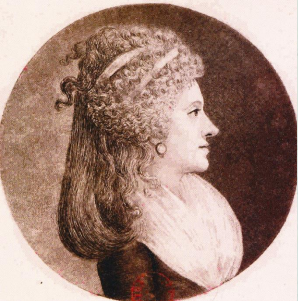
Marie-Jeanne-Amélie Le Francais de Lalande, born Marie-Jeanne Harlay, was a French astronomer and mathematician.

Colette Beaune is a French historian and professor emeritus at the University of Paris X - Nanterre.

Nompar of Caumont (1391–1446) was a Gascon lord who left written accounts of his pilgrimages to Santiago de Compostela and Jerusalem. His work has also contributed lexicographic inputs to the Dictionary of Middle French.

The Collège of Bernardins, or Collège Saint-Bernard, located no 20, rue de Poissy in the 5th arrondissement of Paris, is a former Cistercian college of the University of Paris. Founded by Stephen of Lexington, abbot of Clairvaux, and built from 1248 with the encouragement of Pope Innocent IV, it served until the French Revolution as the residence for the Cistercian monks who were studying at the University of Paris.

Claude Gauvard is a French historian and Middle Ages specialist. She has been the President of Société de l'histoire de France since 2009.

The Witch trials in France are poorly documented, mainly because a lot of the documents of former witch trials have not been preserved, and no number can therefore be given for the executions of witch trials in France or the true extent of them. While there is much secondary information about witch trials in France, the poor state of documentation often makes them hard to confirm.
The Procès des sorciers de Lyon was a witch trial which took place in Lyon in France between 1742 and 1745. It was the last big witch trial in France and likely the last to result in death sentences. 14 people, mainly men, were charged with having made a pact with Satan and of using witchcraft to find hidden treasures. The trial resulted in three death sentences and three men being condemned to the galleys.
Catherine Quicquat was a French woman who was executed for witchcraft.
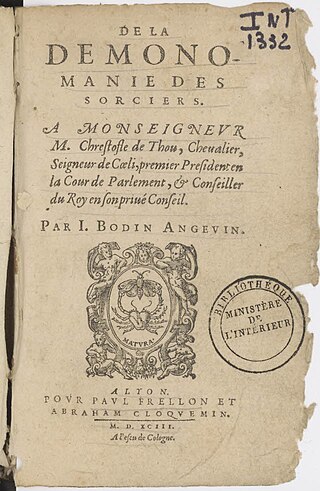
Des Eschelles Manseau also known as Trois-Eschelles was a French magician who was executed for witchcraft.
Valérie Toureille is a French historian and university professor born in 1967 in Île-de-France. She is a specialist in the history of the Middle Ages as well as the crime, criminal gangs and criminal justice of the era.